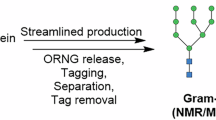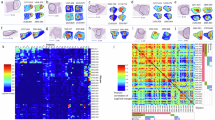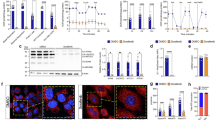Abstract
Extract: Our previous study demonstrated a block in glycine cleavage reaction in the liver from two patients with hyperglycinemia of the nonketotic type. The present study extended this work to two other patients with nonketotic hyperglycinemia and a patient with ketotic hyperglycinemia. The liver specimens obtained from these patients by autopsy or biopsy were studied for the activities of glycine cleavage reaction and of serine hydroxymethylase.
A low activity of glycine cleavage reaction was found in all three patients with nonketotic or ketotic hyperglycinemia, whereas the activity of serine hydroxymethylase remained within normal limits.
Speculation: The present study suggests that a block in the glycine cleavage reaction, either primarily or secondarily, plays an important role in glycine accumulation in both types of hyperglycinemias.
Similar content being viewed by others
Log in or create a free account to read this content
Gain free access to this article, as well as selected content from this journal and more on nature.com
or
Author information
Authors and Affiliations
Rights and permissions
About this article
Cite this article
Tada, K., Corbeel, L., Eeckels, R. et al. A Block in Glycine Cleavage Reaction as a Common Mechanism in Ketotic and Nonketotic Hyperglycinemia. Pediatr Res 8, 721–723 (1974). https://doi.org/10.1203/00006450-197407000-00007
Issue date:
DOI: https://doi.org/10.1203/00006450-197407000-00007
Keywords
This article is cited by
-
Non-ketotic hyperglycinaemia: clinical and biochemical aspects
European Journal of Pediatrics (1987)
-
Threonine dehydratase deficiency: A probable cause of non‐ketotic hyperglycinaemia
Journal of Inherited Metabolic Disease (1984)
-
Evidence for defective threonine metabolism in non‐ketotic hyperglycinaemia
Journal of Inherited Metabolic Disease (1983)
-
Metabolism of glycine in the normal individual and in patients with non‐ketotic hyperglycinaemia
Journal of Inherited Metabolic Disease (1982)



